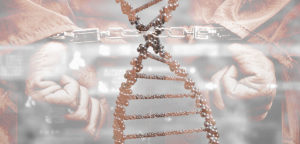The rapid advancement of next-generation sequencing technology, also known as massively parallel sequencing (MPS), has revolutionized many areas of applied research. One such area, the analysis of mitochondrial DNA (mtDNA) in forensic applications, has traditionally used another method—Sanger sequencing followed by capillary electrophoresis (CE).
Although MPS can provide a wealth of information, its initial adoption in forensic workflows continues to be slow. However, the barriers to adoption of the technology have been lowered in recent years, as exemplified by the number of abstracts discussing the use of MPS presented at the 29th International Symposium for Human Identification (ISHI 29), held in September 2018. Compared to Sanger sequencing, MPS can provide more data on minute variations in the human genome, particularly for the analysis of mtDNA and single-nucleotide polymorphisms (SNPs). It is especially powerful for analyzing mixture samples or those where the DNA is highly degraded, such as in human remains.
Continue reading “Harnessing the Power of Massively Parallel Sequencing in Forensic Analysis”

